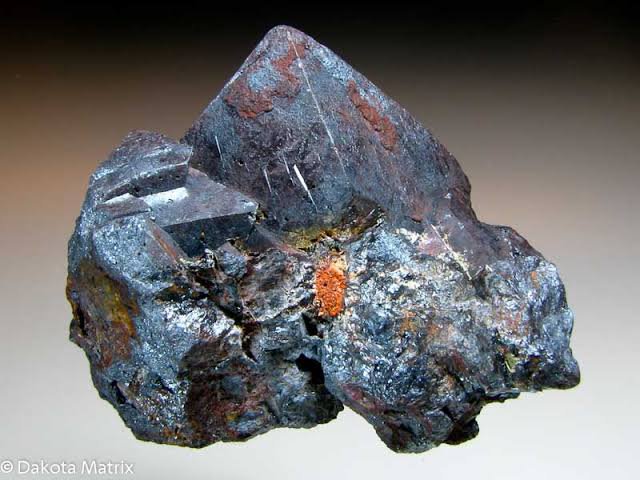Unveiling the Rich Tapestry of Iron Ore
Hematite, a mineral of profound geological significance, stands as one of the most abundant and economically vital iron ores on Earth. Let’s delve into its intricacies, exploring both its physical and chemical properties.

Physical Properties:
Color and Streak:
Hematite’s distinct metallic luster gives it a silver to black color, while its streak, the color left when scraped against a surface, is often a deep red to brown.
Crystal Structure:
– Exhibiting a trigonal crystal system, hematite forms as rhombohedral crystals. It can also manifest as botryoidal (globular) masses and reniform (kidney-shaped) aggregates.
Hardness:
– On the Mohs scale, hematite scores around 5.5-6.5, showcasing moderate hardness. This makes it durable yet susceptible to scratching.
Density:
– Hematite boasts a relatively high density, typically ranging from 4.9 to 5.3 g/cm³, reflecting its substantial iron content.
Magnetism:
– While not always strongly magnetic, certain varieties of hematite can exhibit magnetic properties, attracting small metallic objects.
Cleavage and Fracture:
– Hematite exhibits no distinct cleavage, breaking with an uneven or conchoidal fracture. This fracture pattern contributes to its ability to form intricate shapes in nature.
Chemical Properties:
Chemical Formula:
– Hematite’s chemical composition is primarily iron oxide, represented as Fe2O3. It is composed of two iron atoms bonded to three oxygen atoms.
Iron Content:
– Typically containing around 70% iron, hematite is a key source of this crucial metal. Its high iron content makes it a valuable resource for iron extraction in the steel industry.
Impurities:
– Hematite can contain various impurities, including silica, aluminum, and other minerals. These impurities can influence its color and overall quality.
Formation:
– Hematite forms through various geological processes, including precipitation from aqueous solutions, alteration of other iron-bearing minerals, and deposition in sedimentary environments.
Uses:
– Beyond its significance in steel production, hematite has historical uses as a pigment for cave paintings and as a gemstone. In modern times, its magnetic varieties find applications in certain technologies.
Geological Occurrence:
– Hematite is widely distributed and is found in sedimentary, metamorphic, and igneous rocks. Banded iron formations (BIFs) are notable geological formations where hematite is a predominant component.
In conclusion, hematite’s multifaceted nature, blending captivating physical features with critical chemical compositions, has secured its role as a cornerstone in various realms, from the annals of geological history to the heart of industrial processes. As we continue to unearth its secrets, hematite remains an enduring testament to the intricate interplay of Earth’s natural forces.